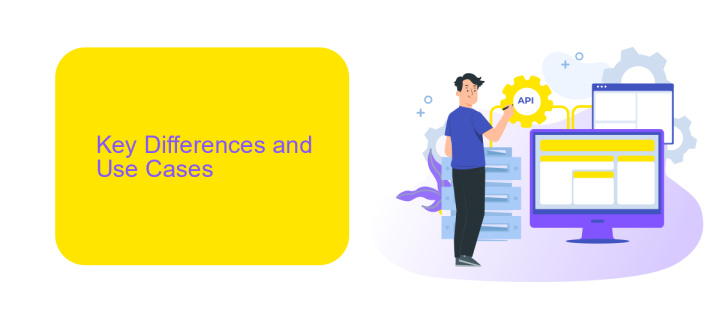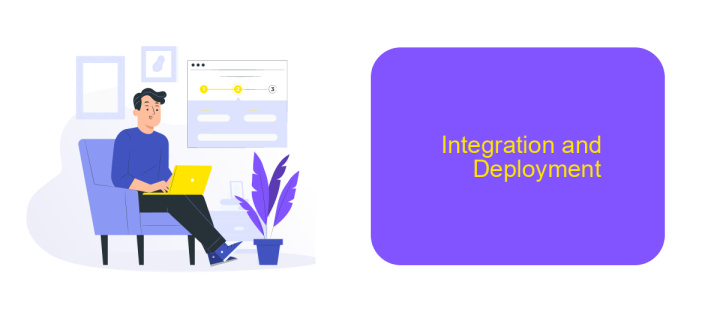Apigee Product Vs Proxy
In the rapidly evolving landscape of API management, choosing the right tool is crucial for seamless integration and performance. This article delves into a comparison between Apigee, a robust API management platform, and traditional proxy solutions. By examining their features, scalability, and ease of use, we aim to provide insights that will help you make an informed decision for your organization's needs.
Apigee Product and Proxy Comparison
When comparing Apigee Product and Proxy, it is essential to understand their distinct roles in API management. Apigee Product is designed to bundle multiple API proxies and offer them as a single package, enabling easier management and monetization. On the other hand, an Apigee Proxy serves as a gateway that handles API requests, enforces policies, and provides security features.
- Apigee Product: Bundles multiple APIs, simplifies management, and supports monetization.
- Apigee Proxy: Acts as a gateway, manages API traffic, enforces policies, and ensures security.
- Integration: Tools like ApiX-Drive can be used to streamline the integration process, enhancing efficiency and reducing manual effort.
In summary, while Apigee Product focuses on packaging and monetizing APIs, Apigee Proxy is concerned with the operational aspects such as traffic management and security. Utilizing integration services like ApiX-Drive can further optimize the API management process, making it more efficient and effective.
Key Differences and Use Cases

Apigee Product and Apigee Proxy serve distinct roles in API management. Apigee Product is designed to bundle multiple API proxies into a single package, allowing for streamlined access control, rate limiting, and monetization. This makes it ideal for businesses looking to offer API services to external developers or partners, ensuring consistent policy enforcement and easier subscription management.
On the other hand, Apigee Proxy focuses on the transformation, security, and mediation of API requests and responses. It acts as an intermediary between the client and backend services, providing features like caching, logging, and traffic management. For instance, integrating with services like ApiX-Drive can enhance the capabilities of Apigee Proxy by automating data transfer between different applications, ensuring seamless workflows and reducing manual intervention. While Apigee Product is best suited for API productization and monetization, Apigee Proxy excels in operational management and optimization of API traffic.
Use Cases and Best Practices

Apigee products and proxies serve different purposes and are used in various scenarios to optimize API management and integration. Understanding the use cases and best practices for each can significantly enhance your API strategy.
- API Gateway: Use Apigee as a gateway to manage, secure, and scale your APIs. This is critical for businesses with multiple APIs requiring centralized control.
- Microservices: Implement Apigee proxies to manage microservices architecture. Proxies help in routing requests efficiently and applying security policies.
- Integration: Leverage Apigee in conjunction with integration services like ApiX-Drive to connect disparate systems seamlessly. ApiX-Drive can automate data flows, reducing manual intervention.
- Monitoring and Analytics: Utilize Apigee’s monitoring tools to gain insights into API performance and usage patterns, which is essential for optimizing and scaling your API infrastructure.
To ensure optimal performance, always follow best practices such as implementing robust security measures, regularly monitoring API traffic, and using automated integration tools like ApiX-Drive. This will help in maintaining a resilient and efficient API ecosystem.
Integration and Deployment

Integrating and deploying Apigee products and proxies can significantly enhance your API management capabilities. Apigee provides a robust platform that simplifies the process of creating, securing, and scaling APIs, while also offering detailed analytics and monitoring features.
When it comes to deployment, Apigee allows for seamless integration with various backend services, ensuring that your APIs can communicate effectively with existing systems. The platform supports multiple environments, such as development, testing, and production, enabling smooth transitions and minimizing downtime.
- Seamless backend integration
- Support for multiple environments
- Detailed analytics and monitoring
- Scalable API management
Additionally, tools like ApiX-Drive can further streamline the integration process by automating data transfers between different applications and services. This not only saves time but also reduces the risk of errors, ensuring that your API deployments are both efficient and reliable. By leveraging these tools, organizations can achieve a more cohesive and functional API ecosystem.
Pricing and Support
When comparing the pricing models of Apigee Product and Proxy, it's important to note that Apigee offers a flexible pricing structure tailored to various business needs. Apigee provides a pay-as-you-go model, allowing organizations to scale their usage based on demand. This approach ensures that businesses only pay for what they use, making it cost-effective for both small enterprises and large corporations. On the other hand, Proxy solutions might have a more rigid pricing model, which can sometimes result in higher costs, especially for growing businesses with fluctuating API traffic.
Support is another critical factor to consider. Apigee offers comprehensive support plans, including 24/7 technical assistance, dedicated account managers, and extensive documentation to help users resolve issues promptly. Additionally, for those looking to streamline their API integrations, services like ApiX-Drive can be invaluable. ApiX-Drive simplifies the integration process, allowing users to connect various applications and automate workflows without extensive coding knowledge. This can enhance the overall user experience and reduce the time needed to deploy and manage API solutions.
- Automate the work of an online store or landing
- Empower through integration
- Don't spend money on programmers and integrators
- Save time by automating routine tasks
FAQ
What is the difference between an Apigee Product and an Apigee Proxy?
How do I manage access control in Apigee?
Can I automate the deployment of Apigee Proxies?
What are some best practices for designing an Apigee Proxy?
How can I integrate Apigee with other services for automation?
Apix-Drive is a universal tool that will quickly streamline any workflow, freeing you from routine and possible financial losses. Try ApiX-Drive in action and see how useful it is for you personally. In the meantime, when you are setting up connections between systems, think about where you are investing your free time, because now you will have much more of it.


